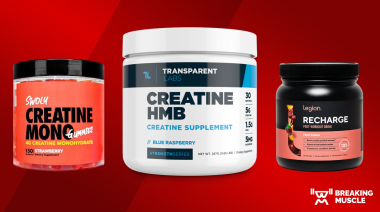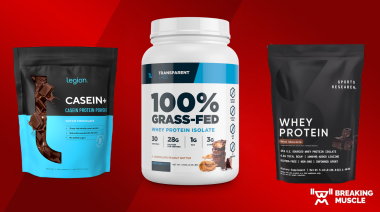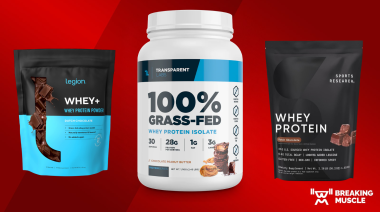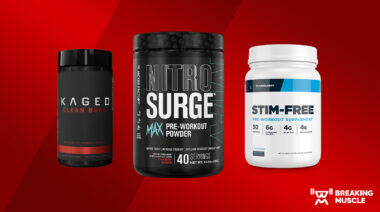If you’re like 99% of the people who read part one of this series, you probably learned some stuff you didn’t know about protein. If you’re in the other 1%, then you probably work in the supplement industry already (or you’re one of the soulless cretins who tried using the article as a way to promote your terrible MLM company). Whatever the case may be, I’m glad to have you back.
And here are ten more things I know about protein that you don’t:
1. Spot Buying
Sometimes a batch of protein gets messed up during processing. Maybe the manufacturers dry it out too much when making it into a powder or they scorch it during the pasteurization process. It’s not ruined, but it’s not what companies are looking to purchase because it generally has several areas where it fails to meet product specs for the company selling it.
In these cases, a phone call is made to a client, and they’re offered a nice discount on the damaged product. This is the kind of stuff that doesn’t make it into emails. It’s still the same amount of (let’s say) casein per gram, it’s just a bit damaged (and likely less bioavailable). Maybe the flavor is off, or whatever.
But you know what isn’t damaged? The price. The company selling it to you isn’t going to knock a few bucks off the retail price just because the protein is lower quality than usual (and especially not when the end customer doesn’t know). This is called spot buying – and it’s very common.
2. Salmon Protein Hydrolysate Is Sludge Made of Organs and Bones
Salmon protein hydrolysate is a nice way to say “waste byproduct of salmon processing.” You’re not getting salmon sashimi in liquid form. You’re getting the stuff that didn’t make it to your local sushi joint – the viscera and bones. This garbage is run through a huge smasher and then hydrolyzed (enzymatically broken down) into salmon sludge, and then turned into powder.
Can it get worse? I’m glad you asked. To date there have been two studies performed on hydrolyzed salmon protein in athletes. One study resulted in zero performance benefit, and in the other it was actually shown to provide minimal benefit over carbohydrate ingestion to lesser-trained athletes, but in trained athletes, it actually decreased their performance.
3. Protein Is Not Amino Acids
I can already feel the venom oozing through the keyboards on this one. About to unleash your unbridled fury in the comments section? Hold that snarky thought for a second. Protein is made up of amino acids, but when we look at a whole protein source, the effects are disparate when measured against the aminos that make it up.
For example, whey protein has been compared with its constituent aminos (i.e. taking the exact amino acid formula of whey protein and comparing it with just those aminos, not from whey). When they were examined head to head, whey protein caused greater increases in the signaling pathway that causes muscle growth and greater post-exercise changes in the mechanisms that regulate endurance adaptations. Even if we take the exact same aminos in the same ratios and amounts, we can’t replicate the effects of the whole protein.
On a side note, it’s a logical fallacy to assume that what is true of a part is also true of the whole, and vice versa. Look it up.
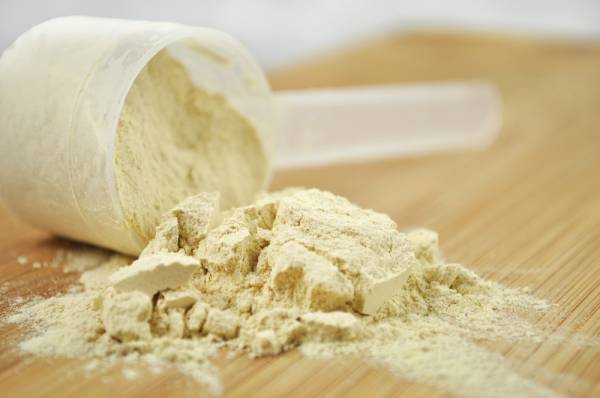
4. Soy Lecithin Doesn’t Matter
Don’t get me wrong, if you’re allergic to soy, then soy lecithin can matter. But most studies show there isn’t enough soy in soy lecithin to elicit an allergic reaction. The actual amount of soy protein in soy lecithin is less than three percent. The amount of soy lecithin in your protein powder is a few hundred milligrams. So take those milligrams and slice off 97%, and that’s the actual amount of soy protein you’re getting per shake. There’s just no way we’ll see a physiological response with a few thousandths of a gram of soy protein.
There’s also an argument that the solvent used to make soy lecithin might still be present after production. In reality, the FDA mandates that a solvent be disclosed on the label if any traces are left in the final product. So unless you see the solvent listed on the label, it’s not there anymore.
5. Your Protein Isn’t Made by CrossFitters; It’s Made by Bodybuilders
This point relates to my prior article where I wrote about most protein coming from the same few places. In the case of companies catering to CrossFit, most of them are bodybuilding companies in disguise.
Pursuit-Rx is actually owned by Dymatize, and was formed after several (apparently unsuccessful) months of trying to break into the market under their own name. Nutriforce Sport is actually the same people as Betancourt Nutrition. Wfit Nutrition is Weider. You get the idea – companies who are too bodybuilder-y couldn’t enter the market with their current brand, so they started spinning off smaller brands who weren’t associated with the bodybuilding world.
I’m sure I’ll get some flack in the industry for this one, but the fact remains that most bodybuilding companies who have gotten a foothold in CrossFit and the emerging cultures (Tough Mudder, Spartan Race, World Series of Exercise), are doing it under a name far removed from the oiled up thong-wearing dorks that constitute their usual customer base.
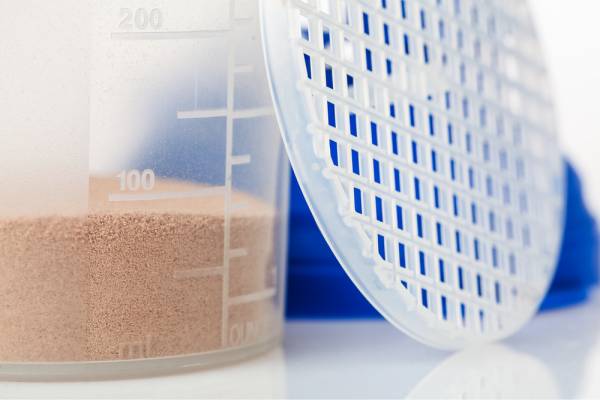
6. Your Post-Workout Should Actually Be a Pre-Workout Shake
Most studies on post-workout nutrition were conducted on fasted individuals. So these people trained on an empty stomach, and when they consumed their post-workout protein shake, all of the biomarkers for muscle building shot through the roof. Hence, the post-workout “anabolic window” myth was born.
However, when a post-training shake was compared with a pre-training shake in a randomized study, there were no statistically relevant differences between net muscle protein balance and amino acid uptake. Moreover, if we look a bit deeper into these results, we see that throughout training, blood flow was significantly greater in the pre-workout shake group. We also find that (although not statistically relevant) 50% of the pre-workout group had greater amino acid uptake than anyone in the post-workout group.
7. Your Post-Workout Amino Acids Should Be Pre-Workout Too
Again, when a pre- versus post-workout consumption of an amino/carb drink was studied, amino acid uptake and other markers of anabolism were higher in the pre-workout group. This actually continued far past the workout itself, easily past the time when we’d have expected most people to have another meal.
8. Your L-Glutamine Might Contain Gluten
No only that, but your glutamine peptides almost certainly do. Wheat is a great source of L-glutamine. Because of this, some manufacturers use it to produce their L-glutamine products. Although not as common as it once was, using wheat to produce the much sexier sounding (and expensive) “glutamine peptides” is widespread. Obviously this can be an issue for people who avoid gluten. If you’re using L-glutamine or especially glutamine peptides, check the label to make sure it’s gluten free.
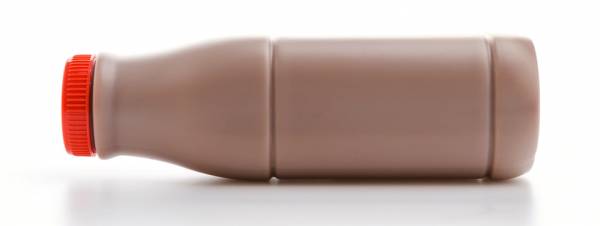
9. Chocolate Milk Can’t Live Up to the Hype
Deep down, even the contrarians who shouted the loudest about how chocolate milk was superior to commercial protein powders must have known how stupid this idea was. Even assuming post-training use only (to justify the sugar content), and figuring on a 20oz glass to get 20 grams of protein, a good protein shake is going to produce far greater results.
But what about the studies? Yeah, what about them? Well, they never looked at a realistic control group, and instead tested chocolate milk as a post-training beverage against carbohydrate + electrolyte powders in drinks or against nothing at all. The only thing those studies could conclude is that protein builds more muscle than carbs. Oh, and these studies were primarily funded by (you guessed it) the people who sell chocolate milk.
10. Your Triple Cheeseburger Is a Waste of Money
Let’s assume you are the sort of person who occasionally enjoys a nice, grass-fed, free range, cheeseburger. Telling the waiter to supersize it and bring you a triple cheeseburger isn’t going to build any additional muscle, even though you’re ingesting three times the protein. This comes from a study where 30 grams of protein (90% lean beef) was compared to 90 grams, and both increased protein synthesis by approximately 50%. If you like your burger supersized, I’ve got no problem with that – but don’t think it’s going to help you build any more muscle.
References:
1. Jason C. Sieglar et al, “The effect of carbohydrate and marine peptide hydrolysate co-ingestion on endurance exercise metabolism and performance,” Journal of International Sports Nutrition 2013; 10: 29.
2. Geir Vegge et al, “Improved cycling performance with ingestion of hydrolyzed marine protein depends on performance level,” Journal of International Sports Nutrition 2012; 9: 14.
3. A. Kanda et al, “Post-exercise whey protein hydrolysate supplementation induces a greater increase in muscle protein synthesis than its constituent amino acid content,” British Journal of Nutrition 2013 Sep 28; 110(6): 981-7.
4. A. Kanda et al, “Post-exercise impact of ingested whey protein hydrolysate on gene expression profiles in rat skeletal muscle: activation of extracellular signal-regulated kinase ½ and hypoxia-inducible factor-1α,” British Journal of Nutrition 2014 Jun; 111(12):2067-78.
5. KD Tipton, “Stimulation of net muscle protein synthesis by whey protein ingestion before and after exercise,” American Journal of Physiology – Endocrinology and Metabolism 2007 Jan; 292(1):E71-6.
6. Kevin D. Tipton et al, “Timing of amino acid-carbohydrate ingestion alters anabolic response of muscle to resistance exercise,” American Journal of Physiology – Endocrinology and Metabolism 2001 Aug: 281:E197-E206.
7. TB Symons et al, “A moderate serving of high-quality protein maximally stimulates skeletal muscle protein synthesis in young and elderly subjects,” Journal of the American Dietetic Association 2009 Sep; 109(9):1582-6.
Photos courtesy of Shutterstock.

